| Architect |
Jürgen Mayer H., Andre Santer, Marta Ramírez Iglesias |
| Date
Built |
April 2011 |
| Location |
Plaza de la
Encarnacion |
| Description |
|
In
2004, J.Mayer.H won an international
competition to redevelop Plaza de la
Encarnacion in central Seville. This
remarkable wooden structure was at the heart
of the project. The architects
describe it as, "... the
new icon for Seville, – a place of
identification and to articulate
Seville’s role as one of the world’s
most fascinating cultural destinations.
“Metropol Parasol” explores the
potential of the Plaza de la Encarnacion
to become the new contemporary urban
centre." The parasol soars above the square and offers visitors an elevated walkway from which they can view the city below. 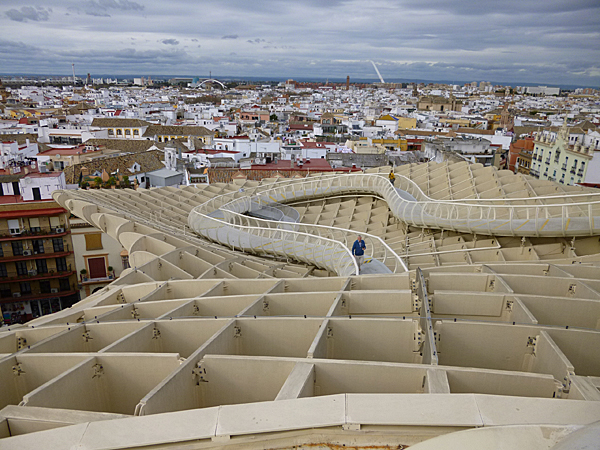 To reach the walkway you have to first go below ground. Here you can access the lift that takes you up to the roof but you can also visit the excavations of the historic sites buried beneath the square. 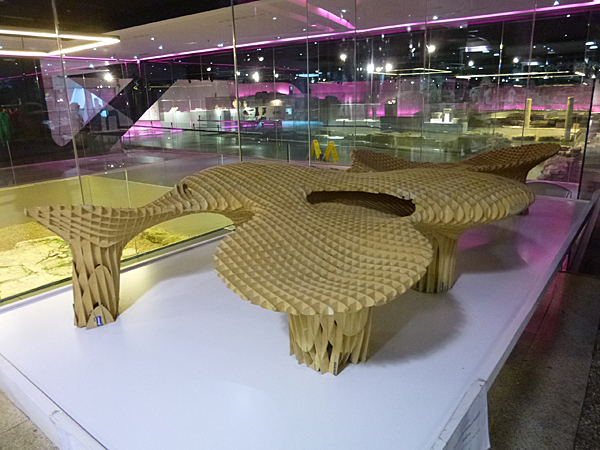 The architects say of the parasol that it, "... grows out of the archaeological excavation site into a contemporary landmark, defining a unique relationship between the historical and the contemporary city. “Metropol Parasols” mix-used character initiates a dynamic development for culture and commerce in the heart of Seville and beyond." The Wikipedia site says that, "... Construction began on June 26, 2005, with an estimated cost of 50 million euros and a projected completion date in June 2007. However, unknown to the public, the project soon faced difficulties. By May 2007 engineering firm Arup informed the municipal authorities that the structure was technically infeasible as designed, given that a number of structural assumptions had not been tested and the design appeared to violate the limitations of known materials. The wood used was birch, imported from Finland, because of its straight qualities. Much time was spent developing feasible alternative plans to buttress the structure, which themselves proved impractical because of the added weight. A feasible design using glue as reinforcement was finally settled on only at the beginning of 2009. By some estimates, due to delays, the total cost of the structure approached 100 million euros." 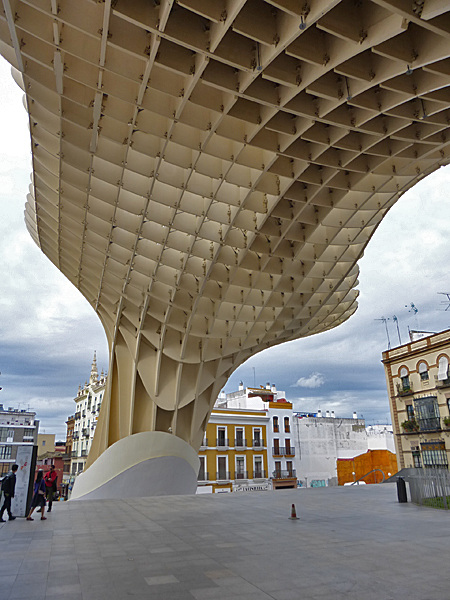  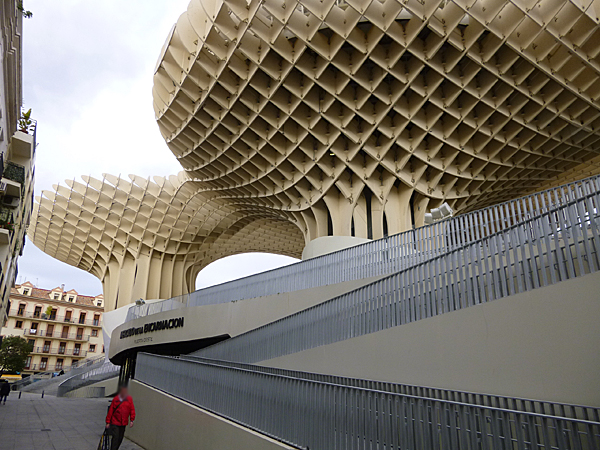 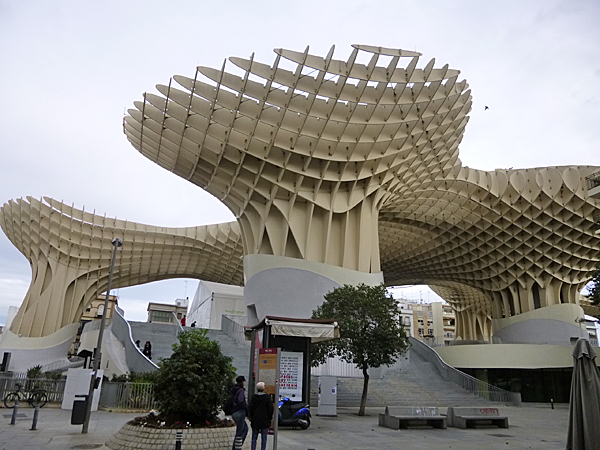 - Up on top -   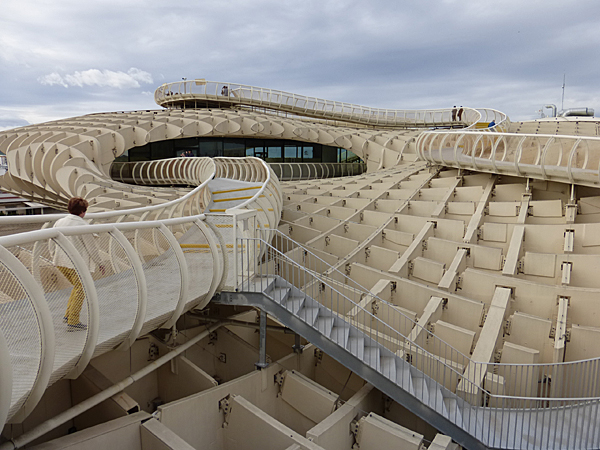 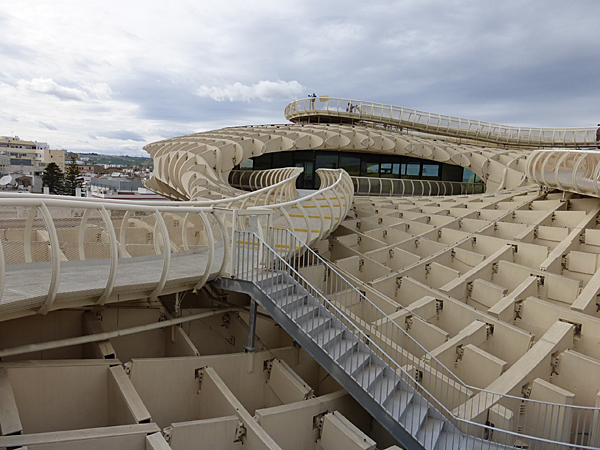  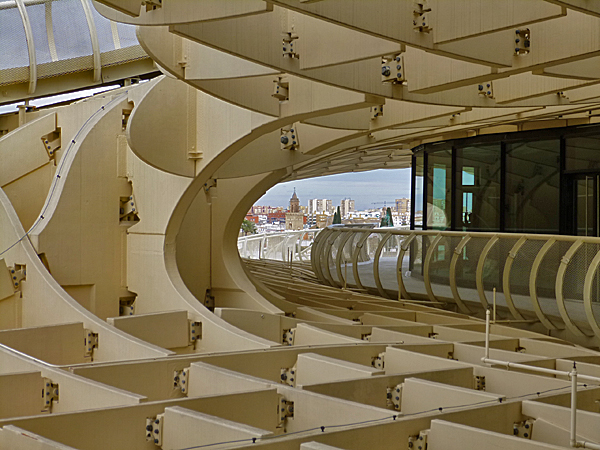 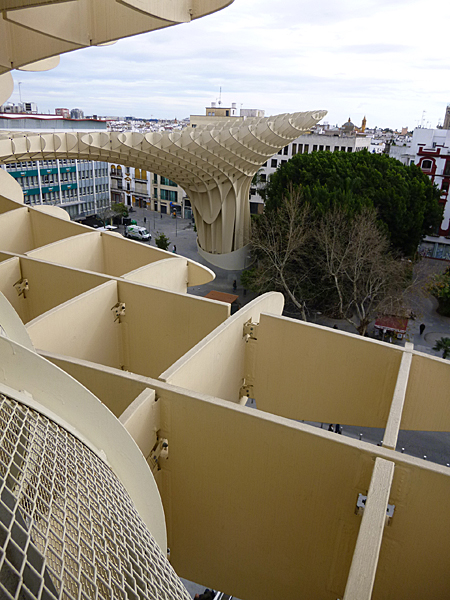 |
|
|
Metropol
Parisol, Seville, Spain
 |
